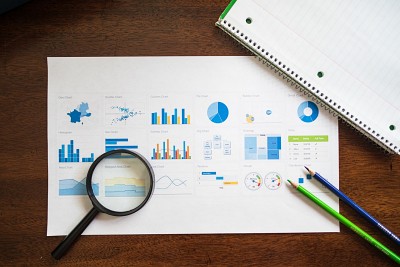Causal analysis is a research technique that can help businesses get to the root of specific behaviors or events. It’s like detective work, where you try to figure out what caused something to happen. By proving a connection between cause and effect of two variables, this method can assist in evaluating marketing campaigns, improving internal processes, and achieving successful business goals.
Curious how you can conduct causal analysis yourself? Well, you’ve come to the right place. In this article, we’ll explore causal research in-depth and cover all its essential components, advantages, examples, and critical tips. Whether you’re a business owner or a researcher, understanding the fundamentals of causal analysis is crucial for making informed decisions based on reliable evidence. So, without any further ado, let’s dive in and learn more!
Understanding Causality in Research – Importance of Causal Analysis
Causal analysis, also known as explanatory research, helps researchers establish a cause-and-effect link between two variables. It’s a commonly used method in research and statistics. The terms cause and effect are essential to this concept. Cause means something that creates a scenario, and effect refers to what happens as a result of that cause. In causal analysis, a causal effect is what has occurred or is occurring as a consequence of an event that has happened or is happening.
To obtain accurate results while conducting causal analysis, researchers must keep other confounding variables constant while creating or controlling data. However, this can be complicated as other hidden variables may influence the causal relationship.
The primary objective of causal analysis is to identify the root cause of a problem to develop effective solutions. It’s an essential tool for decision-making in various fields, including medicine, psychology, economics, and social sciences.
For example, a company conducting a study on consumer behavior toward changing prices of goods may only be partially confident of the results due to the possible influence of psychological factors on the customer’s decision-making process. Causal analysis helps to account for such factors and provide a more accurate understanding of the relationship between the variables.

Types of Causal Analysis
While working with a research study, causal analysis can be a powerful tool for understanding the relationships (cause and effect) between different variables. Let’s discuss the various types of causal analysis and how they can be used in research:
- Experimental Research
Experimental research is a valuable technique for conducting causal analysis as it involves altering one variable while closely observing its impact on another variable in a controlled setting. Using statistical data and quantitative research methodologies, researchers can use this method to determine a cause-and-effect connection between the two variables.
Experimental research is particularly effective in identifying time-sensitive causal relationships and understanding the significance of causality. It can also provide valuable insights for decision-making. Therefore, conducting experimental studies is highly recommended to understand better how different variables interact.
- Quasi-Experimental Research
A quasi-experimental design is a research method that shares similarities with experimental research but with a crucial difference – the lack of a control group. In this study, researchers manipulate an independent variable, but the group of participants is not randomly assigned. Quasi-research is typically conducted in real-world settings where random assignment may not be possible or necessary.
This method can be beneficial when manipulating the independent variable is neither ethical nor practical. Although quasi-experimental design lacks complete control over variables, it can provide valuable insights into causal relationships in certain situations. So, suppose you are conducting research in a field setting where random assignment is not feasible or relevant. In that case, a quasi-experimental design could be a practical approach to exploring causal relationships.
- Observational Research
Observational research involves observing and measuring variables without manipulation and is useful when experiments are not possible or ethical. Researchers use surveys, questionnaires, or interviews to record behaviors, events, or phenomena in natural or controlled settings.
While observational research does not involve the manipulation of variables, it can be used to observe and measure the relationships between variables and provide evidence for causal claims. Observational research cannot establish a causal relationship but can provide evidence to support or refute a causal hypothesis. Therefore, observational research can be essential for more significant causal analysis.
- Case-Control Research
Case-control research are an observational study form that’s employed in causal analysis. In a case-control study, the researcher identifies individuals with the outcome of interest (cases) and individuals without the outcome (controls) and then looks back in time to see if there was a difference in exposure to a potential risk factor between the two groups. This allows researchers to determine whether a particular exposure is associated with an increased or decreased outcome risk.
However, like other observational studies, case-control studies cannot establish causation independently and are subject to potential bias. Therefore, they are typically used with other studies, such as cohort studies or randomized controlled trials, to provide more substantial evidence for causation.
- Cohort Research
Cohort studies, a type of observational research, involve following a group of individuals with a particular characteristic over time to identify potential causes. This method, also known as a prospective study, is longitudinal and involves studying subjects more than once. Researchers watch to determine whether they have the presumed causal factor and then observe individuals to see if they develop the disease. The significant distinction between a cohort and case-control study allows for the establishment of causal relationships.
While cohort studies are labor-intensive and expensive, they are the only certain method of determining cause-and-effect correlations. Even so, classifying all instances in a sample population, especially if the problem seems to have a low incidence, is a significant challenge with cohort studies, as is the concern of ‘censoring’ because of the inability to catch up with all individuals participating in the study across several decades due to population movement patterns or fatality.
How is Causal Analysis Different from Other Research Methods?
Causal analysis is unique in its focus on determining cause-and-effect relationships between variables, setting it apart from other research methods like descriptive and exploratory research which aim to describe or explore phenomena. Causal analysis involves manipulating an independent variable and assessing its effects on a dependent variable in a controlled setting, typically a laboratory, and using statistical data analysis to draw conclusions. In contrast, other research methods may rely on surveys, interviews, or observations to gather data.
Causal analysis is particularly useful in comprehending complexities and making predictions as it identifies the factors contributing to a particular outcome. Overall, the emphasis on causality and the use of experimental research distinguishes causal analysis as a distinct research method.
-

What Are the Three Criteria for Causality?
-

The Importance of Data Analysis in Research
-

Is Data Analysis Qualitative or Quantitative? (We Find Out)
Causal Analysis – Pros and Cons
Causal analysis is a powerful technique that can provide valuable insights into the relationships between variables, but like any research method, it has its strengths and limitations. Let’s take a closer look at some of the pros and cons of causal analysis.
Pros
- Cause-and-effect relationship: Causal analysis allows researchers to establish or determine an existing cause-and-effect relationship between variables.
- Cause for an outcome: It helps identify the factors responsible for a particular outcome or effect.
- Identify Potential Solutions: It can identify potential solutions to problems or make predictions about future events.
- Understanding Complex Phenomenon: It can help improve understanding of complex phenomena by breaking them down into parts.
Cons
- Expensive and time-consuming: Causal analysis can be expensive and time-consuming, especially when conducting experimental studies.
- Difficulty in establishing causality: It can be challenging to establish causality in some cases, especially in non-experimental studies where multiple variables may affect the outcomes.
- Potential for Error: Causal analysis requires careful experimental design and data analysis to minimize the potential for error. However, even with the best design and analysis, there is always the potential for error in the results.
Steps for Conducting Causal Analysis
Step 1: Define the study’s purpose and objectives clearly.
Step 2: Enter the causal research phase utilizing insights from exploratory, descriptive, and correlational research.
Step 3: Formulate a hypothesis and gather evidence to support it.
Step 4: Establish temporal sequence, and concomitant variation, and eliminate spurious correlations.
- Temporal Sequence: The events must occur in an orderly manner. The cause must occur before the effect establishes a correlation between the two variables.
- Concomitant Variation: Change in one entity should result in a change in the other entity, establishing a cause-and-effect relationship.
- Spurious Correlations: A relationship exists between the two variables in question, i.e., the cause-and-effect relationship, but occasionally, this relationship exists only by coincidence; hence they appear to be causal, but they are not.
Step 5: Experiment in a controlled environment by determining the effect on a dependent variable caused by manipulating the independent variable.
Step 6: Draw conclusions based on the findings and make recommendations for future research.
Causal Analysis in Research – Examples
Causal analysis has demonstrated its usefulness in various fields and has been practically applied in many ways. Here are some examples of how causal analysis has been implemented:
Effect of the launch of a novel product:
On the launching of a new product, tracking its sales and analyzing customer feedback allows the company to rank the launch’s success, hence establishing a cause-and-effect relationship. This can result in valuable statistics for the company to decide whether to continue promoting the product or make changes to the product or marketing strategy for future launches.
Clinical Trials to assess the efficacy of a new drug:
For the treatment of a particular disease, clinical trials are held to test the potency of a new product. Patients are randomly assigned either the concerned drug or a placebo, and the outcomes between the two groups are compared. The findings of this analysis can determine whether the drug is effective, hence a perfect example of causal analysis.
Customer feedback analysis to improve products or services:
Companies can identify areas for improvement in their products or services by analyzing customer feedback. This may entail gathering and analyzing information from surveys, social media, or customer service interactions. This analysis’s findings can be used to increase customer satisfaction and loyalty.
Improving student learning outcomes:
In this study, groups of students are randomly assigned to classes utilizing traditional or new teaching methods. Statistical data, i.e., their test scores, are collected and compared by researchers to determine the effectiveness of the two. This research is also exemplary in determining the efficacy and practicality of causal analysis.
Wrap Up
Causal analysis is a research technique utilized to establish a cause-and-effect relationship between two variables and is crucial for decision-making in various fields such as medicine, psychology, economics, and social sciences. There are various types of causal analysis, including experimental, quasi-experimental, observational, case-control, and cohort research. Each type of causal analysis has advantages and disadvantages and can be applied in some particular situations, depending on the research question and the feasibility of the research design.
What sets causal analysis apart from other research methods is its primary focus on establishing causality. Unlike other research methods, such as descriptive or correlational research, which can only identify relationships between variables, causal analysis involves manipulating one variable to observe its impact on another variable and ruling out alternative explanations. This approach allows researchers to determine the root cause of a problem and develop practical solutions based on reliable evidence.
Lastly, here’s a take-home summary table for you to quickly differentiate between causal analysis and other research methodologies:
| Research Technique | Objective | Strengths | Limitations |
| Causal Analysis | Identifies cause-and-effect relationship | Establishes causality and makes predictions | Ability to control confounding variables |
| Correlational Analysis | Examine the relationship between variables | Quick and easy to perform | Cannot establish causality |
| Descriptive Analysis | Describes a phenomenon or population | Provides a comprehensive understanding | Cannot establish causality or make predictions |
| Experimental Analysis | Testing cause-and-effect relationships by manipulating independent variables | Establishes causality and controls confounding variables | Limited by feasibility and ethical considerations |
| Survey Analysis | Gathers information about people | Gathers data from a large sample | Quality of survey questions and the potential for bias |
| Qualitative Analysis | Gathers non-numerical data | Provides in-depth insights | Potential for researcher bias and small sample sizes |

